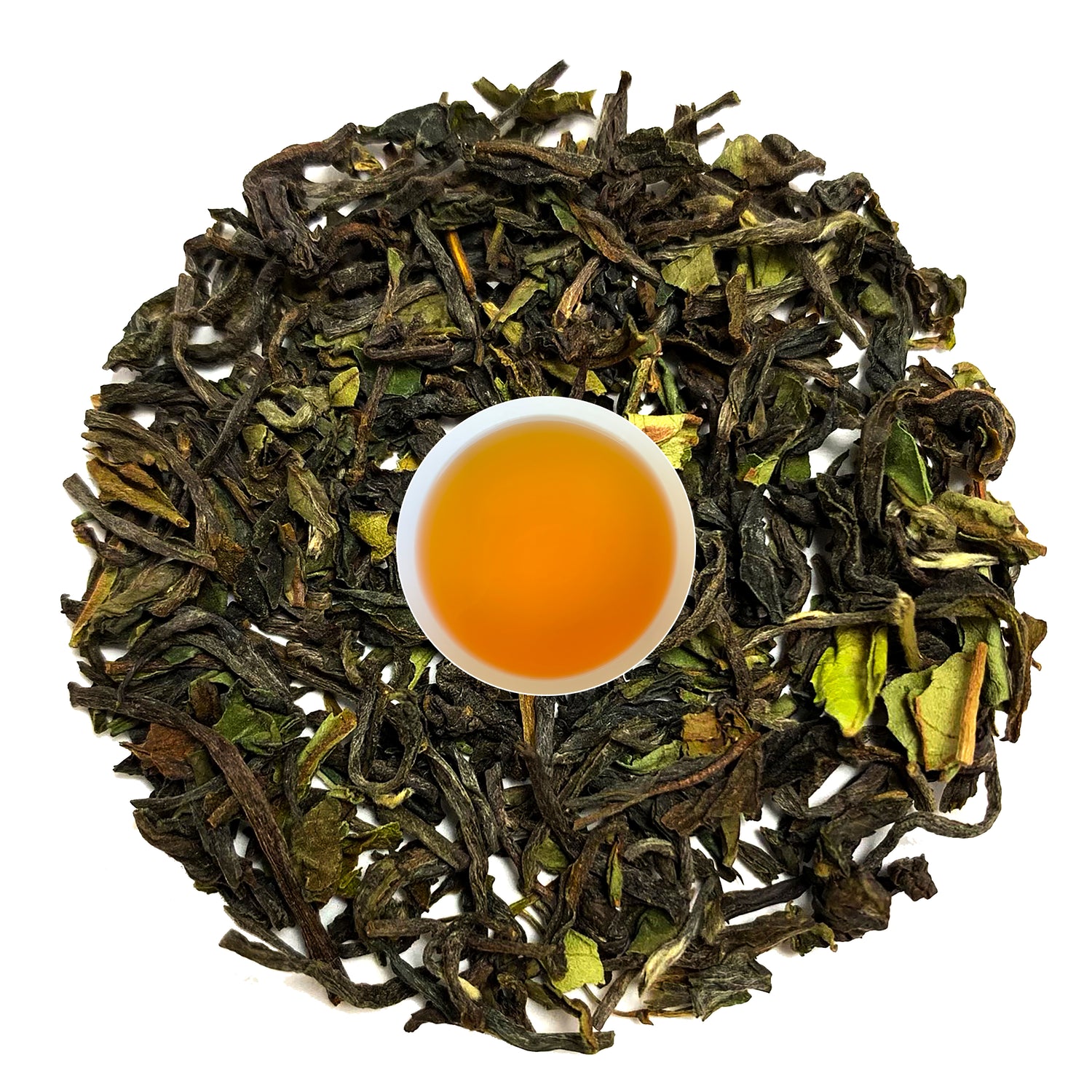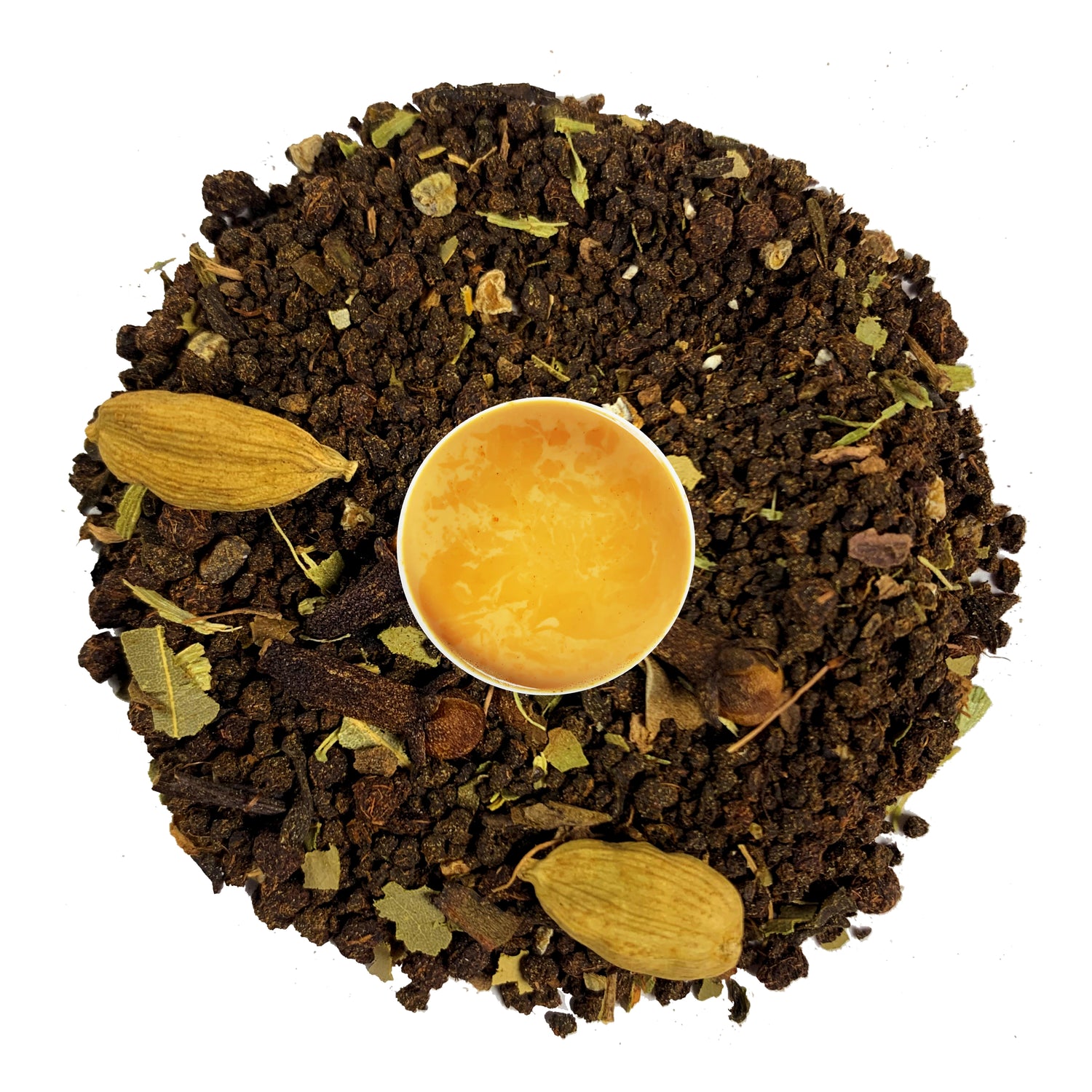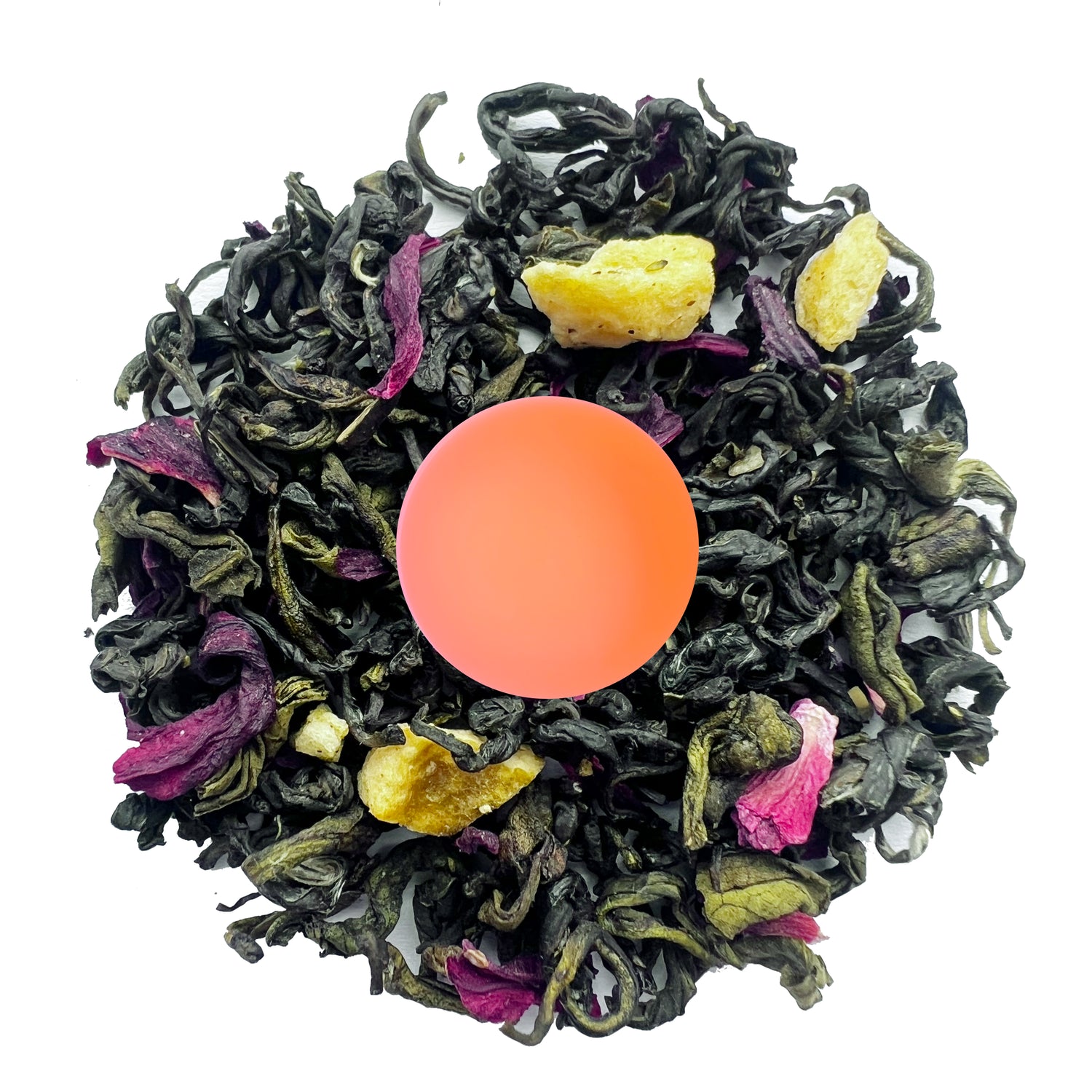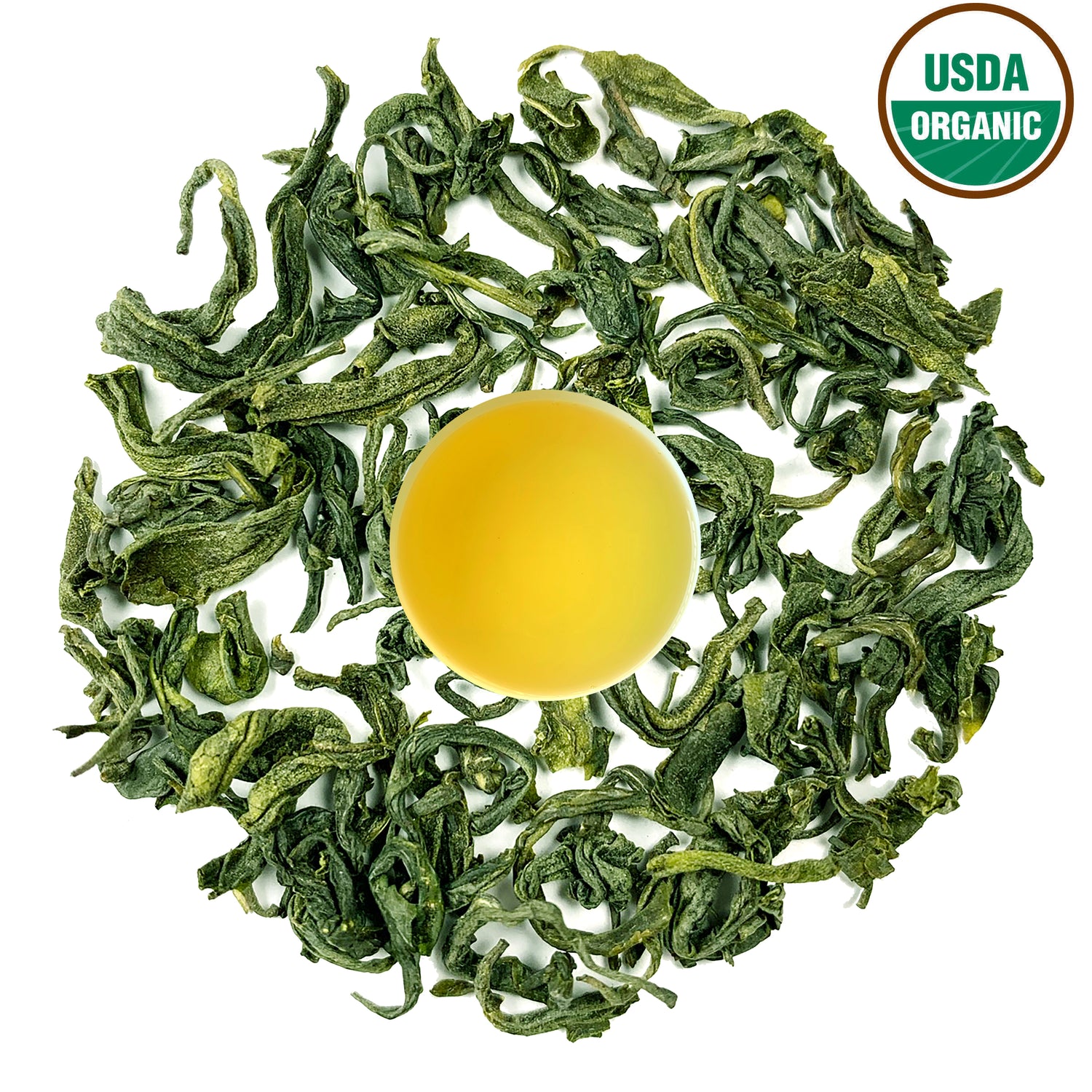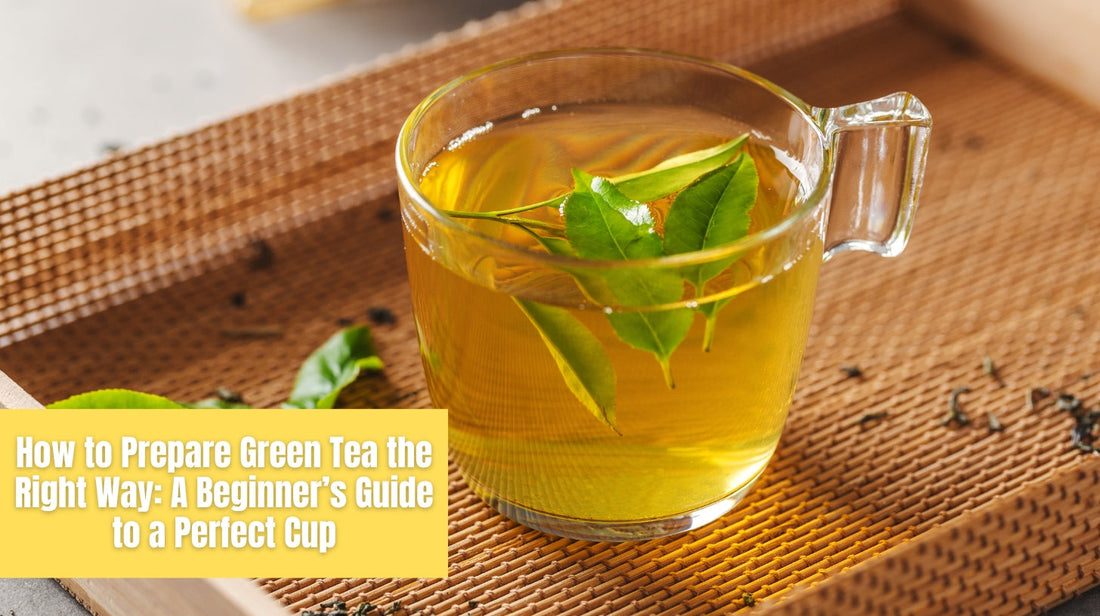
How to Prepare Green Tea the Right Way: A Beginner’s Guide to a Perfect Cup
Why Brewing Green Tea Matters
Have you ever made a cup of green tea that tasted bitter or “too grassy”? Don’t worry—you’re not alone. Green tea is one of the most loved teas in the world, but it’s also one of the easiest to mess up. That’s because the leaves are more delicate than black tea, oolong, or chai.
When brewed the right way, green tea is smooth, slightly sweet, and refreshing. It’s also rich in antioxidants that support everything from metabolism to skin health. But when brewed the wrong way, it can lose both taste and benefits.
That’s why understanding how to prepare green tea the right way is the foundation of enjoying it daily.
Choosing the Right Green Tea
There are many types of green tea, and choosing the right one depends on your taste and goals:
- Jasmine Green Tea → Green tea delicately scented with jasmine flowers, delivering a floral sweetness. Its taste is light, smooth, and subtly perfumed.
- Loose-Leaf Green Tea → A classic, unblended green tea known for its fresh, clean flavor and gentle aroma — simple yet refined.
- Peach Green Tea → Fruity and refreshing, with a natural sweetness that makes it a favorite for iced tea lovers.
- Sugar Green Tea → A sweeter variation crafted for those who enjoy indulgence, though traditionalists often prefer the pure, unsweetened taste.
If your goal is wellness, choose a top-rated green tea for weight loss such as Mt. Pumori Green Tea. Many customers call it the best green tea for fat loss because of its metabolism-supporting catechins.
How to Prepare Green Tea (Step by Step)
- Measure → Use 1 teaspoon (2 grams) of green tea leaves per cup.
- Heat Water → Bring water to 75°C–85°C (170–185°F). Boiling water scorches the leaves.
- Steep → Brew for 2–3 minutes only. Longer steeping = bitterness.
-
Strain & Sip → Remove leaves and enjoy while hot.
Tip: For a lighter brew, try multiple short infusions. For example, steep for 90 seconds, then re-steep the same leaves for 2 minutes. Each infusion reveals new flavor notes.
Is Green Tea Herbal?
One of the most common questions is: “Is green tea herbal tea?”
The short answer: No.
Green tea comes from the Camellia sinensis plant, just like black tea and oolong. Herbal teas (like chamomile, lemongrass, or peppermint) don’t come from this plant—they’re tisanes made from herbs, flowers, or fruits.
That said, green tea is often blended with herbs like jasmine, spearmint, or lemongrass, creating powerful wellness combinations.
Green Tea vs Black Tea: Which Is Better?
Another big question: green tea or black tea—which is healthier?
- Green Tea Benefits: Rich in catechins, helps with fat metabolism, improves focus, supports glowing skin.
- Black Tea Benefits: Rich in caffeine with a bold, robust flavor. May support heart health and provide an energizing boost.
| Green Tea Vs Black Tea Full Comparison |
If you’re looking for the best tea for weight loss → choose green tea.
If you want energy with a robust taste → black tea may be better.
Still wondering “which is healthier: black or green tea?” The truth is, both are healthy, but for daily detox and weight management, green tea is stronger.
Exploring Other Herbal Teas Alongside Green Tea
Jasmine Tea
- Light, fragrant, and calming.
-
Many ask, “does jasmine tea have caffeine?” → Yes, since it’s usually green tea with jasmine scent.
Spearmint Tea vs Peppermint Tea
This debate pops up a lot: spearmint vs peppermint tea.
-
Spearmint Tea Benefits → May help with PCOS symptoms, acne, bloating, and hormone balance. Many drink spearmint tea for skin clarity.
- Peppermint Tea Benefits: Naturally soothing and caffeine-free. Known to aid digestion, ease headaches, and promote relaxation.
- Spearmint Tea Side Effects → Usually mild, but too much may lower testosterone in men.
- Does Spearmint Tea Have Caffeine? → No, spearmint tea is naturally caffeine-free.
Choose spearmint for hormonal balance, peppermint for digestion, or try both in rotation.
Lemongrass Tea (Tanglad or Fever Grass Tea)
- Known as tanglad tea in the Philippines, lemongrass tea is famous for digestion, immunity, and relaxation.
- Lemongrass Tea Benefits / Advantages: Reduces bloating, supports sleep, and helps detoxify.
-
Benefits of Drinking Lemongrass Tea Daily: A gentle wellness ritual with calming effects.
Basil Tea (Holy Basil / Tulsi Tea)
- Basil Tea Benefits: Stress relief, immune support, anti-inflammatory effects.
-
Curious about taste? People often ask: “What does holy basil tea taste like?” → It’s earthy, slightly peppery, and refreshing.
Oolong Tea
- Somewhere between green and black tea.
- Oolong Tea Advantages: Aids digestion, supports weight management, and provides moderate caffeine.
-
FAQ: “Does oolong tea have caffeine?” → Yes, but less than black tea.
Detox Teas
- Many drink detox teas for digestion, skin, and cleansing.
- Benefits of Detox Tea: Supports bloating relief, gentle cleansing, and hydration.
- But remember: no tea is a magic fix. The benefits of drinking detox tea show best when paired with a healthy lifestyle.
Teas for Specific Needs
- Best Tea for Bloating: Spearmint tea, peppermint tea, and lemongrass tea.
- Best Green Tea for Weight Loss: Mt. Pumori Green Tea or Gunpowder Green Tea.
- Does Green Tea Make You Poop? → Yes, for some people. It supports digestion thanks to caffeine and polyphenols.
- Black Tea for Hair Growth: Rich in antioxidants that may support scalp circulation.
- Green Tea vs Herbal Tea: Herbal teas are caffeine-free, while green tea has caffeine and unique antioxidants.
Conclusion: Brewing Beyond Green Tea
Learning how to prepare green tea the right way opens the door to enjoying a variety of teas—from spearmint and peppermint to lemongrass and jasmine. Each tea has unique benefits, but the brewing basics remain the same: quality leaves, proper water temperature, and mindful steeping.
If your goal is wellness, weight loss, or just a better tea experience, start with a high-quality loose-leaf tea. And if you’re curious to explore beyond green tea, try herbal options like spearmint, lemongrass, or basil tea for specific health goals
Call to Action
Ready to upgrade your tea ritual? Explore premium Himalayan teas like Mt. Pumori Green Tea, or Nepal Jasmine Green Tea at DanfeTea.com. Every sip is wellness in a cup.
FAQs
Q1: Does chai tea have caffeine?
Yes. Chai is black tea mixed with spices, so it contains caffeine.
Q2: Is green tea stronger than black tea?
In caffeine, no. Black tea is stronger. In antioxidants, green tea wins.
Q3: What does chamomile tea taste like?
Chamomile tea tastes floral, apple-like, and soothing—perfect before bed.
Q4: How long to steep jasmine tea?
2–3 minutes at 80°C–85°C is ideal. Longer steeping makes it bitter.
Q5: What’s the difference between spearmint and peppermint?
Peppermint is sharper and stronger; spearmint is milder and sweeter. Both are great teas, but their benefits differ..


